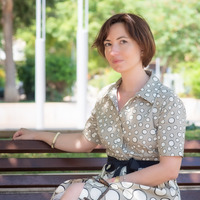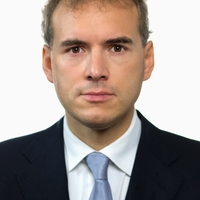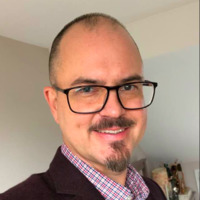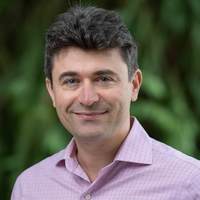
Corinna Guerra
2017 Prize Young Historians by the International Academy of the History of Science for the book "Lavoisier e Parthenope. Contributo ad una storia della chimica del Regno di Napoli" (Naples 2017)
Phone: 0033669078149
Phone: 0033669078149
less
Related Authors
Simon Werrett
University College London
Anthony Pym
Universitat Rovira i Virgili
Armando Marques-Guedes
UNL - New University of Lisbon
Eros Carvalho
Universidade Federal do Rio Grande do Sul
Emily Pawley
Dickinson College
Marco Sgarbi
Università Ca' Foscari Venezia
Thomás A S Haddad
Universidade de São Paulo
Matthew Daniel Eddy
Durham University
Gabriel Paquette
University of Maine
Titika Dimitroulia
National and Kapodistrian University of Athens
InterestsView All (12)










Uploads
Papers by Corinna Guerra
For the first time, on the basis of unpublished documents, the article reconstructs the events that brought this documentation to Naples, twelve years after it was put up for sale. It examines the role that the information archived by Perrey played in the creation of parametric earthquake catalogues, the fundamental tools in historical seismology. Finally, it discusses the reasons for contemporary scientists’ special interest in the historical texts that make up the Fondo Sismico.
The article illustrates what it means to “collect” earthquakes and eruptions, as well as other extreme events and how Perrey built his collection over the course of roughly 40 years, and it describes the role that the catalogs created by Perrey played for historical seismology. Finally, in addition to the value and significance of Perrey’s intellectual enterprise for the history of science, the article discusses the different aspects of archives and archiving for sciences.
(cover issue research paper)
For the first time, on the basis of unpublished documents, the article reconstructs the events that brought this documentation to Naples, twelve years after it was put up for sale. It examines the role that the information archived by Perrey played in the creation of parametric earthquake catalogues, the fundamental tools in historical seismology. Finally, it discusses the reasons for contemporary scientists’ special interest in the historical texts that make up the Fondo Sismico.
The article illustrates what it means to “collect” earthquakes and eruptions, as well as other extreme events and how Perrey built his collection over the course of roughly 40 years, and it describes the role that the catalogs created by Perrey played for historical seismology. Finally, in addition to the value and significance of Perrey’s intellectual enterprise for the history of science, the article discusses the different aspects of archives and archiving for sciences.
(cover issue research paper)
https://www.youtube.com/watch?v=KbiI9n-XGII
Under the patronage of the Autonomous Region Friuli-Venezia Giulia, Municipality of Gorizia, CCIAA - Chamber of Commerce Venezia Giulia, Fondazione Cassa di Risparmio di Gorizia, MiC - Ministry of Culture, AIE - Italian Publishers Association, University of Udine, University of Trieste: The International History Festival aims in each edition to span time, from the ancient to the modern era, on topics of great relevance with a multidisciplinary approach. The Festival consists of an ever-increasing number of appointments to bring together the most authoritative voices animating international research and historical-cultural debate.
https://www.rainews.it/tgr/fvg/video/2023/04/dedicata-alle-donne-ledizione-2023-di-storia-a-gorizia-dal-22-al-29-maggio-b1be357b-6578-43a6-9358-e9630a336cc9.html
https://www.instagram.com/reel/C1BzzK-NQ-t/
The paper focuses on the translation of the seminal work of Stephen Hales Vegetable Staticks (1727) by a brilliant young woman, whose name was Mariangela Ardinghelli (1728-1825). This book initiated new ideas in chemistry and medicine, but many Italian scholars knew the discoveries of the famous English physiologist by the first and only Italian translation published in Naples (i.e. Southern Italy) in 1756. It is due to the choice of the scholar, which consisted on reading the French translation or the Italian one, the final approach to content of the book. Because Ardinghelli’s work is quite different from the French translation by the famous G. L. De Buffon; she added her notes to the text, she also fit the theory to her local context converting, e. g., all English weights and measurements into their Neapolitan equivalents.
The aim of the paper is to show how the influence and the diffusion of the Italian translation modified the transmission of Hales’ works in Italy, through an analysis of Latin, Italian, French and English sources.
Viaggiatori, militari, burocrati, pellegrini, artisti, intellettuali inquieti" at Società Napoletana di Storia Patria, 6-8 novembre 2024
Avant le règne de Joachim-Napoléon Murat (1808-1815), Naples n’avait aucun lieu consacré à la recherche dans le domaine de la chimie, mais deux lieux servaient néanmoins de cadre aux débats chimiques. L’un, institutionnel et « national » mais tardif, était l’Académie militaire de la Nunziatella, où deux professeurs donnèrent la première traduction italienne du Traité élémentaire de chimie de A.-L. Lavoisier, pour adapter la formation des artilleurs aux nouvelles théories. L’autre, naturel et ouvert à la sagacité des savants et amateurs de toute l’Europe, était le complexe volcanique du Vésuve. Les nombreuses descriptions des éruptions de la dernière décennie du siècle ont presque toutes en commun de considérer la chimie comme le substrat scientifique des phénomènes. L’approche napolitaine de la chimie en subit ainsi l’influence en tant que « lieu de savoirs ».
Pour les savants napolitains, les réactions chimiques du complexe vésuvien confirmaient parfaitement la « nouvelle chimie » française, avec les instruments de laquelle ils intervinrent notamment dans la question de l’alimentation, si importante pour la santé et l’ordre public, tout en améliorant leurs outils analytiques et leurs pratiques par l’étude et l’exploitation in situ des produits volcaniques. Mais surtout, les savants européens qui visitaient Naples étaient rarement de « purs » chimistes. A la Grotte du chien, les pratiques des savants et agents français, les observations et expériences qu’ils menèrent ou mandatèrent durant plusieurs décennies connectaient matériellement études érudites, travail manuel, pharmacologie, intérêts industriels et curiosités d’histoire naturelle.
The Chemical Revolution, led by Antoine Lavoisier, dramatically reorganized the discipline of chemistry with new methodological premises and new discoveries. Like all revolutionary movements, the nouvelle chimie was not accepted or acted upon in the same ways or at the same times by communities of scholars as it swept across Europe.
The enormity of its impact on chemists in the Kingdom of Naples was no exception. The largest kingdom in Italy at the time, and the site of Parthenope, the third largest city in Europe, with a name that linked it to the myth of the sirens, Naples already had a long tradition of research and publication.
The author, examining the printed and manuscript texts derived from the work of a diverse set of scholars in the fields of pneumatic, volcanological and medical-pharmaceutical chemistry, gives us a compelling and deeply researched portrait of the Neapolitan chemists who confronted the new theory in their efforts to adopt or refute it. The result is a lively recounting of the scientific life of Parthenope in the second half of the 18th century. The author illuminates the chaotic tangle of personalities who carried out experiments guided by these new principles, who struggled with issues of chemical analysis and who taught the new discipline. She ably demonstrates how the peculiar geochemical properties of the area, dominated by Mount Vesuvius, and the political turmoil of the day, such as the Neapolitan Revolution of 1799, conditioned the history of chemistry in the kingdom.
In September 2017, the book received financing from the Italian Ministry of Cultural Heritage for publications of significant cultural interest and the Prize Young Historians of the International Academy of the History of Science.
To reserve your copy, please, send an email to: info@storiapatrianapoli.it
I was interviewed by RAI-cultura television on the occasion of the SHARPER 2018 Project, where I was protagonist of two events, which took place at the Società Napoletana di Storia Patria. In fact they first interviewed the President Prof. R. De Lorenzo, then me (at minute 03:50). I presented the scientific profiles of some Neapolitan chemists of the Eighteenth century, outlining that already 3 centuries ago, chemists worked in European terms. On the other side, I commented a guided tour of the SNSP library collections with a colleague seismologist of the INGV in order to present to the public the importance of archival research in earthquakes studies.
DEADLINE for applications November 7th, 2024 https://lnkd.in/dVrz7fCX
Presenting the pilot I was (2022-2024) Co-responsible for the COLUMBIA UNIVERSITY of New York Project EditionCrafter, PI Pamela Smith: Crafting an Open Source Digital Publication Tool for the History of Science, funded by the National Science Foundation, now online https://cu-mkp.github.io/editioncrafter/